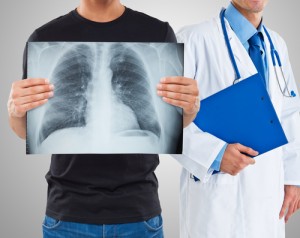 A study on a new technique in the endoscopical diagnosis of malignant and non-malignant lung diseases, entitled “Diagnostic yield of transbronchial cryobiopsy in non-neoplastic lung disease: a retrospective case series,” was recently published in the journal BMC Pulmonary Medicine by Dr. Sergej Griff from the Institute of Pathology, HELIOS Klinikum Emil von Behring, Berlin, Germany, and colleagues.
A study on a new technique in the endoscopical diagnosis of malignant and non-malignant lung diseases, entitled “Diagnostic yield of transbronchial cryobiopsy in non-neoplastic lung disease: a retrospective case series,” was recently published in the journal BMC Pulmonary Medicine by Dr. Sergej Griff from the Institute of Pathology, HELIOS Klinikum Emil von Behring, Berlin, Germany, and colleagues.
Diffuse parenchymal lung diseases (DPLD) are characterized by general pathological alterations in the pulmonary tissue that damage the elasticity and properties of gas exchange of the lungs. The diagnosis of this disease is a difficult task mainly due to the removal of small amount of alveolar tissue using transbronchial lung biopsy (TBB). The use of cryotechnique in bronchoscopy, including TBB by cryoprobe, is a new challenge in the endoscopical diagnosis of malignant and non-malignant lung diseases.
This study was focused mainly in assessing the biopsy sample adequacy for the purposes of diagnostic, sample size and proportion of alveolar tissue removed, as well as the potential of cryobiopsy for histopathological diagnosis of DPLD in association with clinical diagnoses. The authors evaluated the use of transbronchial lung biopsy (TBB) by cryotechnique for the diagnosis of non-neoplastic lung diseases in 52 patients with a mean age of 63 +/- 13 years with unclear diffuse parenchymal lung diseases (DPLD). The subjects were submitted to bronchoscopy with TBB with a cryoprobe and the histopathological results were compared with the clinical diagnosis.
[adrotate group=”7″]
Although the authors found encouraging results about cryobiopsy, the findings are not sufficient for establishing transbronchial cryobiopsy as a standard method for assessing pulmonary fibrosis. However, the cryobiopsy with a greater sample size may be used to distinguish between hypersensitivity pneumonitis (HP) with usual interstitial pneumonia (UIP) pattern and idiopathic pulmonary fibrosis (IPF) as well as to recognize granulomas or other specific histopathological parameters. Thus larger prospective and comparative samples must be analysed before a general clinical algorithm can be proposed. For the meantime, cryobiopsy can be used in patients where full pattern of UIP was diagnosed; therefore open lung biopsy is unnecessary if the results from histological and clinical analysis produce a clear diagnosis.

